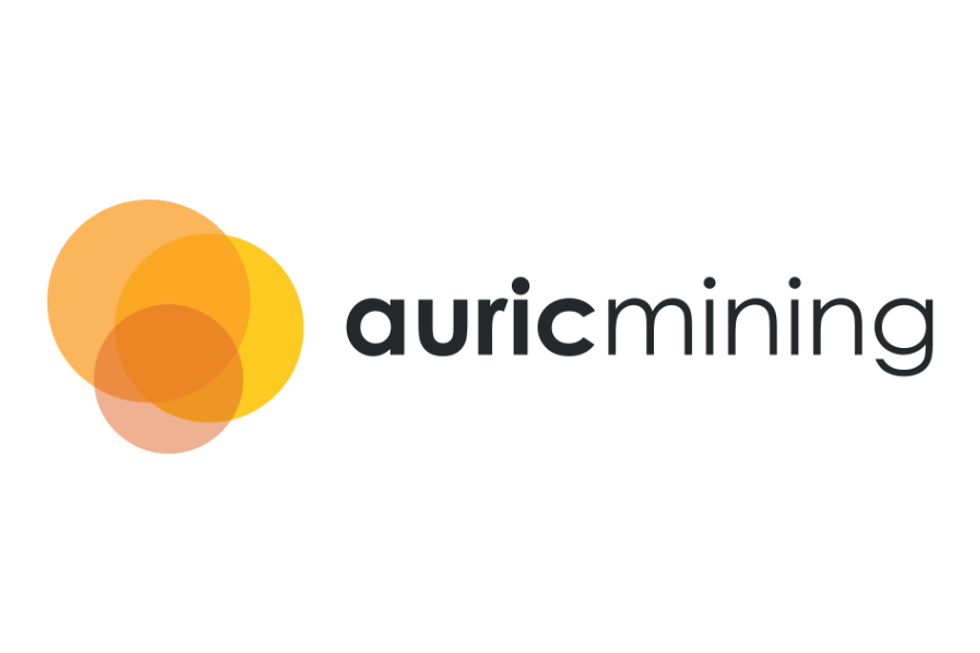- AustraliaNorth AmericaWorld
Investing News NetworkYour trusted source for investing success
- Lithium Outlook
- Oil and Gas Outlook
- Gold Outlook Report
- Uranium Outlook
- Rare Earths Outlook
- All Outlook Reports
- Top Generative AI Stocks
- Top EV Stocks
- Biggest AI Companies
- Biggest Blockchain Stocks
- Biggest Cryptocurrency-mining Stocks
- Biggest Cybersecurity Companies
- Biggest Robotics Companies
- Biggest Social Media Companies
- Biggest Technology ETFs
- Artificial Intellgience ETFs
- Robotics ETFs
- Canadian Cryptocurrency ETFs
- Artificial Intelligence Outlook
- EV Outlook
- Cleantech Outlook
- Crypto Outlook
- Tech Outlook
- All Market Outlook Reports
- Cannabis Weekly Round-Up
- Top Alzheimer's Treatment Stocks
- Top Biotech Stocks
- Top Plant-based Food Stocks
- Biggest Cannabis Stocks
- Biggest Pharma Stocks
- Longevity Stocks to Watch
- Psychedelics Stocks to Watch
- Top Cobalt Stocks
- Small Biotech ETFs to Watch
- Top Life Science ETFs
- Biggest Pharmaceutical ETFs
- Life Science Outlook
- Biotech Outlook
- Cannabis Outlook
- Pharma Outlook
- Psychedelics Outlook
- All Market Outlook Reports
Rights Issue and Shortfall

The annual mining conference opened with experts predicting a mixed near-term outlook for resources, but stating that underlying trends should fuel demand in the long run.
The Prospectors & Developers Association of Canada (PDAC) conference got underway in Toronto on Sunday with a key annual feature: the commodities and market outlook, which gathered speakers from across the industry to comment on the direction of prices and resource demand.
Almost all speakers referenced the well-known list of woes bedeviling miners today, which includes rising costs, weaker demand, greater risk of political interference as well as permitting delays and costs caused by tighter regulations. Much attention was also paid to the most important obstacle for juniors: tight financing markets, which have many struggling just to hang on.
That last point was a key focus of the keynote speech by Phil Newman, CEO of London-based consulting firm CRU Strategies. One factor adding to juniors’ woes, is, paradoxically, rebounding stock markets. “The good news is that investment demand is there,” he said, “but recovering equity markets are giving investors more choice.” In addition, he added, “a lot of money is staying in people’s pockets. The overall amount of money raised in 2012 was less than in 2008.”
Fundraising hasn’t been nearly as much of a problem for major producers, however, thanks to strong demand for corporate bonds. However, noted Newman, that’s being partly offset by rising costs. “Majors are having an easy time raising money, but they are still spending quite substantially. Lots of projects are being postponed,” he noted.
Cost pressures are also prompting majors to sell assets, which Newman sees as a trigger for improved M&A activity later this year. “Those assets will get bought,” he said.
Europe will move “from terrible to bad”
Taking a wider perspective, Newman sees the US eventually sorting out its recurring fiscal arguments — including the latest round of spending cuts, known as sequestration, which kicked in on March 1. “Our view is that the US will sort out its fiscal fight, and we see the US economy moving rather well,” he said. Newman also sees improvement in Europe, but that has to be kept in context: “our forecast for Europe has moved from terrible to bad,” he said — though he did say that Germany’s prospects look brighter.
His advice to investors: for hints at future resource demand, keep an eye on consumer spending and always take a critical view of analysts’ forecasts. “Watch the consumer. Keep a close eye on what the consumer is doing,” he said. “And remember that analysts tend to overestimate resource supplies.”
Urbanization of China remains key
Duncan Hobbs of Macquarie Capital echoed a number of Newman’s findings, including those regarding the state of the US economy. “Data point to about 3.5-percent growth in the US, which is more brisk than many people perceive,” he said. Even so, the near-term picture remains mixed on a global basis: “most numbers are moving in the right direction, but in some countries they are still in the negative,” he said.
China, as always, remains in the driver’s seat. Hobbs sees the continued urbanization of that country continuing to push up resource demand in the coming years, not only due to the growth of China’s cities, but also as a result of infrastructure being rebuilt to cope with rising demand from all those new urban citizens.
“Right now, just over half of China’s population is urban, so there is still a long way to go. If urbanization rises to 70 percent of the population [or roughly equal to western levels], you would be looking at moving 300 million more people — or nearly the entire population of the US — into an urban setting. This will be a key driver of resource demand for both the medium and long term.”
Chinese car demand will also spur resource consumption
Hobbs also pointed out that Chinese car ownership per capita is at about the same level as it was in the US in 1919, which means there’s still lots of room for growth. If the level of car ownership in China rises at the same level as it has historically in the US and other countries, the number of cars on the road — and demand for the metals needed to build them — could skyrocket.
“If we see the same sort of trebling of vehicle fleet [in China],” Hobbs said, “it would be the equivalent of adding 220 million vehicles on the road, or about 90 percent of the US vehicle fleet today.”
These factors all add up to strong long-term prospects for the mining business, but that may not translate into matching price gains. “More mine output and more mining investment will be needed for many years to come,” he said. “But prices are about balance between demand and supply. And China has not only added to the demand side, but also the supply side in recent years as it has ramped up domestic resource production.”
A smart tactic for investors, then, is to think long term and focus on commodities that China doesn’t already have in abundance. “The short term is definitely mixed,” Hobbs said. “The outlook is positive in the US, but in most commodities and base metal markets there is enough production in the pipeline to meet demand. The long term is positive, though, and the best prospects are in commodities that China is short of domestically.”
Speakers also presented their short- and long-term views for specific metals. Here are a few highlights:
- Iron ore: Hobbs was also the panel’s point person on iron ore. He admitted to being surprised by the metal’s recent surge to its current level of around $150. But he’s not sure it’ll last as last fall’s wave of restocking by steel mills has largely ceased. “We see prices weakening beyond 2013,” he said. “Demand will ease a little bit. Europe will recover, but only back to 2008 levels. Majors will also increase production, helping push the iron ore price down to $100 by 2017, with the potential to move lower.”
- Gold: Martin Murenbeeld of DundeeWealth believes gold’s bull run is not over, despite its recent swoon, mainly because he sees central banks continuing their accommodative monetary policies, which add to gold’s appeal as an inflation hedge. However, he also outlined a number of bearish factors for gold, including the rising attractiveness of equities as stock markets rebound. In January, he issued a weighted average price forecast of $1,768 an ounce, but at the conference he stressed that the metal is increasingly hard to predict. “Last year was my worst forecast in 10 years,” he said.
- Uranium: Despite slumping uranium use in the wake of the Fukushima crisis, Tim Gabruch, vice president of marketing strategy and administration at Cameco (NYSE:CCJ,TSX:CCO), forecasts strong long-term demand on the back of continuing nuclear reactor building programs in China and other developing countries. Other favorable factors, like the return to power of the pro-nuclear Liberal Democratic Party in Japan and a sharply rising global population, should also give demand for nuclear power a boost.
- Zinc: Michael Williams of Full Metal Zinc (TSXV:FZ) referred to the zinc as “at best copper’s poor cousin.” But he thinks a coming 12.5-percent production drop as current mines exhaust their reserves will help spur a price rise. “I believe that one day we will get out of bed and zinc will be at $1.20 a pound, and several weeks later it will be $1.70,” he said.
- Copper: Paul Benjamin of research and consulting firm Wood Mackenzie sees 5 million metric tons of copper production capacity coming onstream between now and 2017, creating a surplus. However, he feels a supply gap will open up again after 2017 and forecasts that 6.2 million tons of new production capacity will be needed by 2022. “Once the glut of new projects come online, the prospects for copper prices are generally good,” he said.
Securities Disclosure: I, Chad Fraser, hold no positions in any of the companies mentioned in this article.
Related reading:
Latest Mining M&A Figures Show an Industry in Transition
Outlook Reports
Browse Companies
MARKETS
COMMODITIES
| Commodities | |||
|---|---|---|---|
| Gold | 2386.08 | +4.28 | |
| Silver | 28.97 | +0.08 | |
| Copper | 4.37 | -0.01 | |
| Oil | 85.94 | +0.53 | |
| Heating Oil | 2.67 | +0.01 | |
| Natural Gas | 1.69 | -0.01 | |
Investing News Network websites or approved third-party tools use cookies. Please refer to the cookie policy for collected data, privacy and GDPR compliance. By continuing to browse the site, you agree to our use of cookies.





